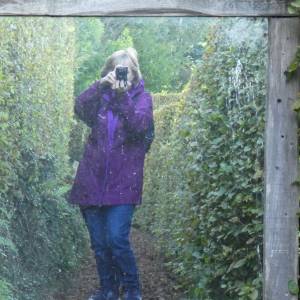Fossil Tree Stump
On the Catlins coastal route.
We are now in Dunedin, no photos taken today, for the next two nights we are staying in a lovely airbnb on Portabella road in a house overlooking the bay and I am resting, I think the fall yesterday is taking its toll today. The extras include more of the fossil tree forest and that beautiful looking sea weed.
Info from the Internet
The fossilised trees occur in green sandstones, alternating with blue shaly clays containing plant impressions. Silica has replaced the entire woody structure of the trees and rendered them extremely resistant to erosion. Thus they withstand the action of the sea much longer than the surrounding rocks and are exposed in relief by the erosion. In the past, erect tree trunks have been found standing in the face of the sea cliffs, with their entire root systems exposed in the underlying beds. The sandstones are almost flat lying and at low tide form wide shelving ledges over which are strewn many tree stumps and prostrate trunks. On occasion many trunks over 50ft in length have been measured and some have exceeded 100 ft. Fossil wood has been obtained at intervals along the Waikawa coast for some 8 miles and also inland near Waimahaka, indicating that the fossil-forest beds were probably of considerable extent. The blue shaly clays associated with the fossil forest have yielded abundant impressions of fernlike plants, and these have been described by Arber (loc. cit.) and Edwards (Annals and Magazine of Natural History, Ser. 10, Vol. 13, pp. 81–109).
Some of the fossil trees are related to the modern kauri and Norfolk Island pine, and they and the associated plant impressions have been dated as middle Jurassic, about 160 million years old. Plant beds of about the same age occur elsewhere in southeastern Southland and southern Otago – at Mataura Falls, Gore, and Owaka (Catlins).



Comments
Sign in or get an account to comment.


